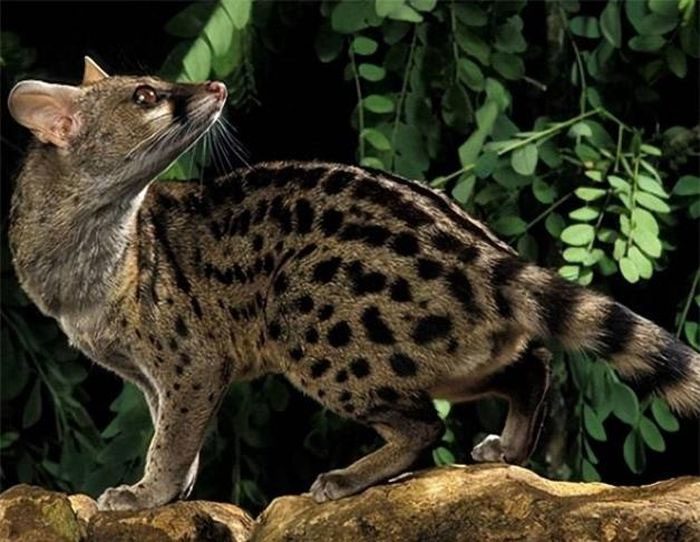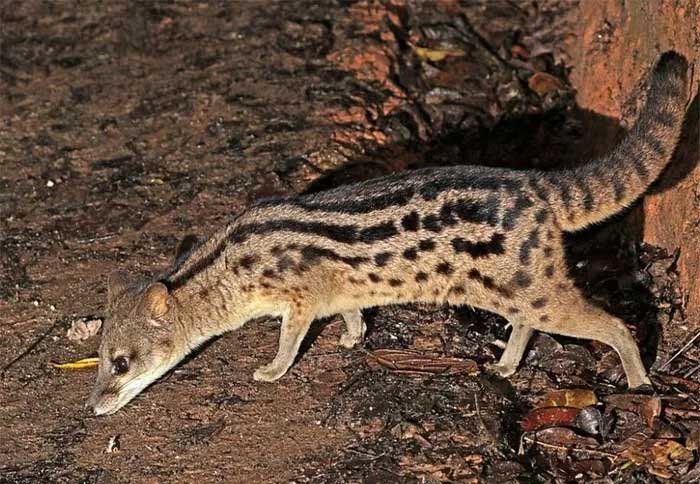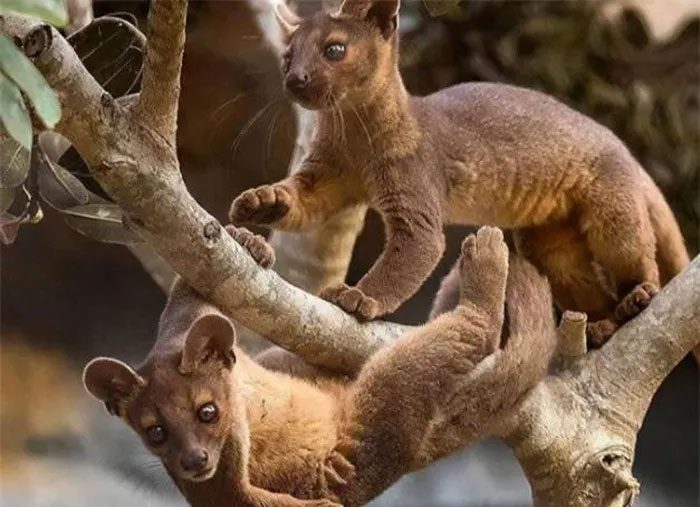In the animal kingdom, mating duration is closely linked to the reproductive success of species. However, scientists were astonished to discover that the mating period of a small and adorable animal like the Madagascar civet can actually last up to 8 hours!
Many people may wonder about the reason behind this peculiar mating behavior of this species. Perhaps this extremely long mating duration is a unique reproductive strategy of the Madagascar civet.
To ensure their offspring have a higher survival rate, Madagascar civets are willing to invest more time and energy in mating.
Don’t rush to cringe at this animal’s mating habits; instead, appreciate the wondrous beauty of nature and the unique survival strategies of each species.

Madagascar Civet. (Illustrative image).
The Madagascar civet, also known as the African civet, is a small mammal that inhabits the tropical rainforests of West Africa. Although it appears relatively ordinary, the Madagascar civet is known for its unique reproductive behavior, the most notable feature being its extremely long mating period.
Compared to other mammals, the mating behavior of Madagascar civets can last several hours or even longer. A typical mating session can take anywhere from 30 minutes to 4 hours. This phenomenon has left researchers ‘confounded’ and eager to investigate the mystery behind it.

The Madagascar civet is quite a shy animal.
We need to understand the environment in which Madagascar civets live. They are relatively shy animals that inhabit hollows or trees in the forest, are nocturnal, and feed on plants and insects. Due to habitat constraints and many competitors in their environment, mating behavior becomes even more crucial for maintaining their species.
The mating duration of Madagascar civets is directly related to their lifestyle. Extended mating helps ensure successful pair bonding and increases fertilization rates. Short mating durations offer fewer chances for successful fertilization, which can diminish reproductive success. Therefore, lengthy mating behavior ensures adequate fertilization time and increases the population of this species.

Extended mating may also relate to physiological mechanisms.
The mating behavior of Madagascar civets is also influenced by competition among males. During the breeding season, males often compete for territory; to win mating rights, they display their strength and prowess. Extended mating can serve as a way to establish territory by spending more time excluding other males while producing more offspring.
Extended mating may also relate to physiological mechanisms. Researchers have found that male Madagascar civets release more sperm during mating, and the longer the mating duration, the higher the sperm count. This means that prolonged mating plays an active role in increasing fertilization rates.
Although the mating behavior of Madagascar civets is unusual, it does not imply that they need to mate for long periods to reproduce successfully. In fact, a successful mating can take just a few seconds. However, extended mating seems to be crucial for increasing the population of this species.
The long mating behavior of the Madagascar civet can serve multiple purposes: physiological mechanisms, territorial control, and increased fertilization opportunities…
While many mysteries remain unexplored, it is certain that the Madagascar civet has become a unique animal due to its “one-of-a-kind” reproductive characteristics.
The Madagascar civet is an endemic species of Madagascar and is known for its prolonged mating. This extended mating plays a vital role in protecting the survival of its offspring.
Madagascar civets are omnivorous, primarily feeding on fruits, insects, and small vertebrates. Due to the relatively scarce resources on the island, Madagascar civets face significant challenges in foraging for food.
The benefits of this prolonged mating include enhancing the genetic diversity of offspring and improving their adaptability to the environment. The island’s limited food supply poses a significant challenge. By mating for an extended time, Madagascar civets can increase the genetic diversity of their offspring, making them better able to adapt and thrive.
Extended mating also ensures reproductive success. As food is scarce, male civets may compete with one another for mating rights. By mating with multiple males, female civets can improve their chances of successful reproduction.

Extended mating also helps mitigate predation threats. On the island of Madagascar, natural enemies of the Madagascar civet include large birds and predators. Prolonged mating may take more time and energy, making it harder for predators to find food, thereby reducing offspring loss.
Extended mating has many biological implications for male Madagascar civets. First, prolonged mating increases the competitiveness of males. During mating, male Madagascar civets need to maintain dominance to win the favor of females. Through continuous mating, males can demonstrate greater strength and endurance, thus enhancing their competitiveness.
Extended mating also helps males expel the sperm of competitors. During mating, a female may mate with several males, and prolonged mating can effectively displace the sperm of other males from her body, ensuring that her own sperm successfully fertilizes.
| The Madagascar civet is roughly the size of a cat, with short legs, a pointed snout like a fox, and a sturdy body. They measure about 61–70 cm in length, with a head and body length of 40–45 cm and a tail length of 21–25 cm. Adult males are generally larger than females; males can weigh up to 2.0 kg while females weigh around 1.5 kg. The Madagascar civet is endemic to Madagascar. This species is listed as endangered on the IUCN Red List (2015), classified as vulnerable under criteria A3cde+4cde. |


















































